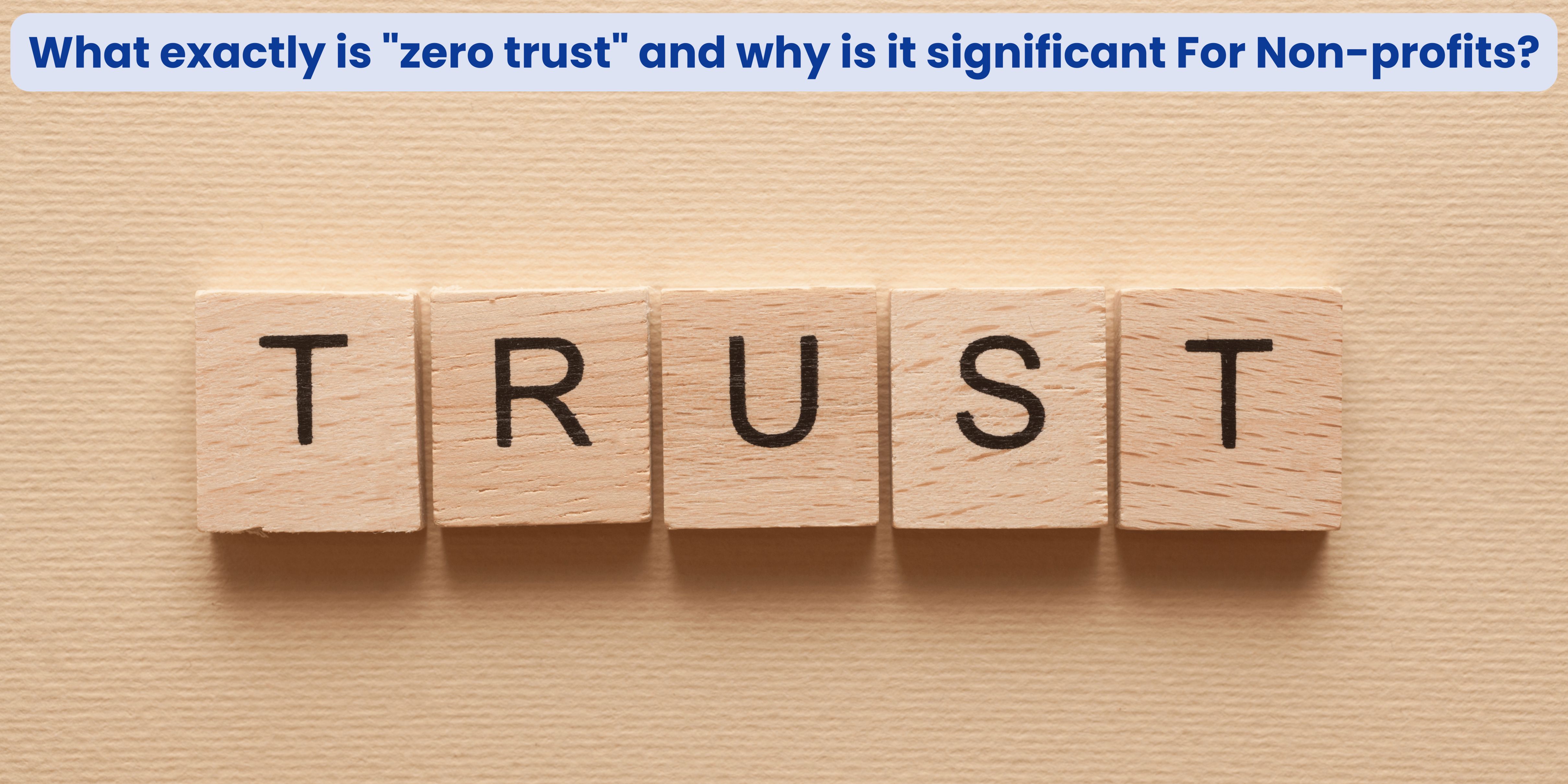What exactly is "zero trust" and why is it significant For Non-profits?
Cybersecurity
Zero Trust & Its Significance:
The highest level of security available is known as zero trust security, in which no device or person can be trusted, not even those that are already within the network's limits.
According to the Verizon Data Breach Investigation Report (DBIR), insider data breaches account for 18% of breaches in the current context, and 81% of breaches are caused by human mistakes, such as falling for phishing, reusing credentials, etc.
Identity verification will be carried out for any person or device trying to access resources inside or outside your network under the Zero Trust Architecture.
How Is Zero-trust Different from Other Security Models?
- Under the traditional IT security architecture, everyone on the network will be trusted and given access to the resources.
- Data breaches could result when a hacker manages to enter your non-profit network.
- Zero-trust forces us to believe that our security is always at risk.
- ZTA makes it essential to re-evaluate trust before granting someone access to the network.
Microsoft identifies the following as the main pillars of zero trust:
Determine Identity:- In the Zero Trust approach, a user's identity must be verified before access to resources is granted.
- Zero trust requires that a user be given access to only the applications they need and nothing more. The use of MFA contributes to improving security.
Verify Device:
Following user authentication, it's crucial to authenticate the devices that users are utilizing to access the resources.
- Mobile phones, laptops, tablets, and other personal, as well as employer-managed devices, are included. Enrolling devices in a device management system is part of the device verification process.
- Devices must be examined to ensure that they adhere to security guidelines and pose no dangers.
Network Verification:
- Network verification is necessary because the network infrastructure makes all data accessible.
- The foundation of a zero-trust architecture is network segmentation.
- The zero-trust approach highlights the notion that security incidents can happen on your network at any time. By segmenting your network, you can lessen the effect a security incident may have on it.
Verify Services:
- We use conditional access across applications and services in this zero-trust pillar.
- To make this possible, we must either modernize legacy applications or use alternatives for apps and services that can't naturally reinforce conditional access.
- Additionally, zero-trust makes it unnecessary to rely on corporate networks and VPNs. This promotes internet access to business resources without the usage of a VPN.
Advantages of Zero-trust:
- Zero-trust makes it easier to see who is using and accessing your resources.
- Continual validation in ZTA restricts the information a user can access and the duration of that access.
- Protection from both internal and external attacks is possible with zero trust.
- It also safeguards the hybrid working model and the remote employees of your non-profit.
- By continuously observing and anticipating new threats, it automates the security control response.
- Because ZTA relies less on endpoints, it is possible to eliminate ransomware threats with Zero-trust.
Conclusion:
Zero Trust Architect could lead to less complicated security, lower operating expenses, and quicker detection and remediation of cyber threats. Additionally, it is the strongest way of cloud security. Organizations can begin with zero trust by identifying their most important data and only putting that data under the zero-trust standard.
Sources:
https://www.microsoft.com/en-us/insidetrack/implementing-a-zero-trust-security-model-at-microsoft
